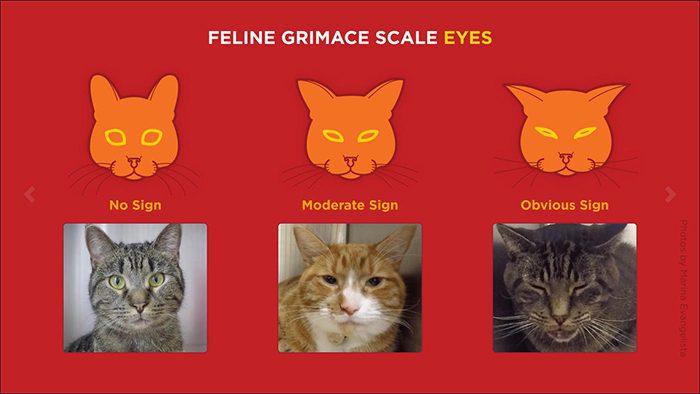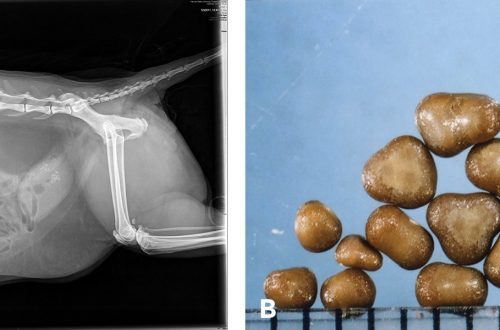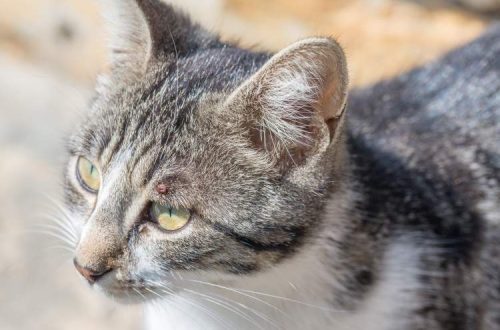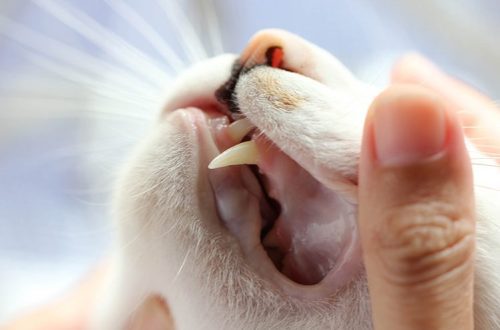
How do you know if a cat is in pain? Signs and symptoms of diseases
It’s easy to miss signs of illness in a cat: they don’t always resemble the symptoms of a cold that people experience from time to time. Cats tend to hide their pain, making it difficult to properly care for them when they need it most. But if you know what to look for, you can recognize your cat’s symptoms early and give her the help she needs.
Contents
Why do cats hide their pain?
It is believed that cats’ tendency to hide their discomfort is a legacy of the wild, when illness or injury made the animal a target for other predators. Not only does the appearance of weakness make a feral cat more vulnerable, but it also puts it at risk of being beaten or abandoned by its fellows.
While today’s domestic cats don’t need to worry about being prey at all, they may view other pets in the house, or even humans, as competitors for resources like food and water. Whether driven by deep-seated instinct or the feline logic of reinsurance, cats fear that signs of pain will lead them to lose to a more deserving animal, prompting them to mask their ailments..
Common signs of pain in a cat
 A cat in pain often exhibits behavioral changes that can help a discerning pet owner determine that something is wrong. According to Vetstreet, common signs of illness or pain in cats include:
A cat in pain often exhibits behavioral changes that can help a discerning pet owner determine that something is wrong. According to Vetstreet, common signs of illness or pain in cats include:
- desire to hide
- sitting up straight or hunched over;
- loss of interest in people, other pets, or any activity;
- neglect of personal hygiene or excessive care of a particular area on the body;
- rumbling, excessive meowing, or unusual sounds;
- restlessness or aggression in a friendly environment;
- defecation outside the tray.
Kittens in pain may also exhibit loss of appetite, uncharacteristic vomiting, compulsive behavior, or other noticeable changes in temperament and demeanor. A cat in chronic pain, such as arthritis, may not use the litter box at all because it is too difficult for her to climb into it. She may also stop climbing or jumping to high levels of her “cat tree” for this reason.
How can a veterinarian help?
 Any abnormal behavior in your cat should be a reason to visit your veterinarian, who can help determine if these changes are due to pain or illness, and then proceed to treat and eliminate the underlying cause. A veterinarian can also help with pain management, such as pain medication, heat therapy, physical rehabilitation, and even massage.
Any abnormal behavior in your cat should be a reason to visit your veterinarian, who can help determine if these changes are due to pain or illness, and then proceed to treat and eliminate the underlying cause. A veterinarian can also help with pain management, such as pain medication, heat therapy, physical rehabilitation, and even massage.
If your cat is overweight, your veterinarian may prescribe a weight management diet, especially if your cat is experiencing chronic joint pain. Some joint health supplements can help keep your cat mobile, but you may end up wanting to learn the basics of therapeutic nutrition to help her cope with an underlying condition.
The one thing you should never do to your cat is give her over-the-counter pain relievers, which can be very harmful to the cat’s digestive system. You should also show your veterinarian any supplements you plan to give her to make sure they are safe. The doctor may also prescribe special medications to help your cat cope with both the pain and associated lifestyle changes.
How can you help
When you get home, think about how to place her bed, food and water bowls, and tray so she can easily reach them. Make sure it’s easy enough for the cat to get in and out of the litter box. For example, if you have a model with a lid or high sides, you should replace it with an open model with lower sides and clean the tray more often to compensate for the lack of size. You have got a big family? Do not allow other pets or children to try to play with a sick animal. The cat can do this on her own, but you don’t want her to lose her trust in people while she recovers, do you?
Of course, the best medicine is prevention. Annual veterinary check-ups and a well-balanced diet play an important role in preventing a cat from developing a disease state.
As a pet owner, you certainly want your cat to stay healthy throughout its life. Learning to recognize when she’s in pain will go a long way in improving your furry friend’s quality of life..





